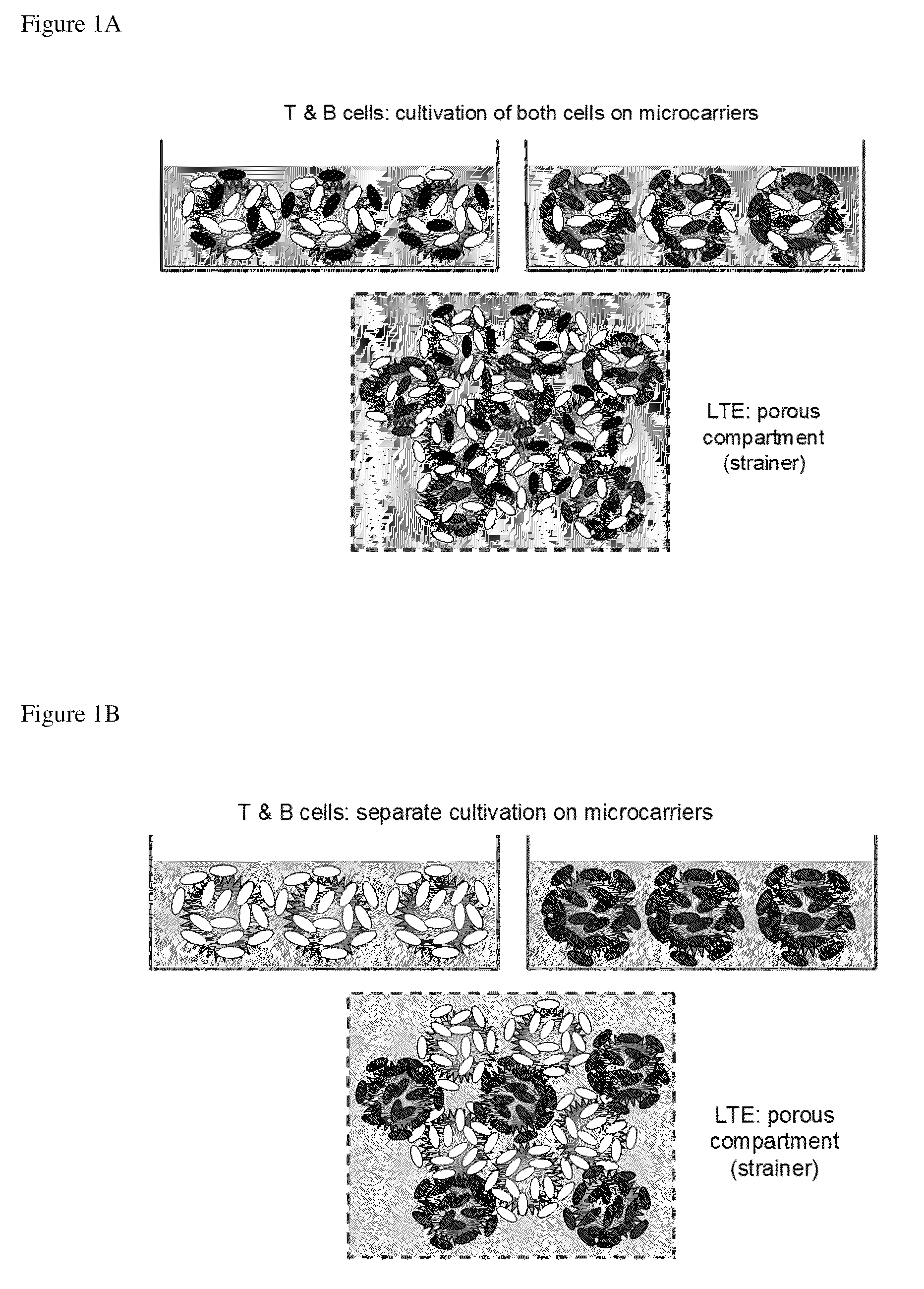Methods for antibody production
- Summary
- Abstract
- Description
- Claims
- Application Information
AI Technical Summary
Benefits of technology
Problems solved by technology
Method used
Image
Examples
example 1
Designer Scaffold Structures
[0139]Designer scaffold structures were constructed to test cell viability, cell motility, and nutrient flow for bioreactors and have studied cell motility as a function of construct stability for collagen gels. FIG. 3 shows HUVEC cells growing on protasan / collagen matrix on a nylon mesh. High magnification SEM of the nylon membrane and interspersed Protasan / collagen matrix material is shown in the top image. Seeding of the primary layer of HUVEC cells was accomplished on an inverted membrane (left, Side 1), then 24 hours later, brought to an upright position (right, Side 2) where the second layer was applied. Phase contrast images of each plane of HUVEC cells is shown in the center two lower images, with the left being the first layer, and the right being the second layer applied.
example 2
Digital Printing Technology
[0140]Preliminary hardware and software ETC heterogeneity digital printing prototypes have been developed. FIG. 4 shows the mockup of a digitally printed lymph node and a retinal image of vasculature. This mockup lymph node comprises six biocompatible hydrogel layers, four different patterns, and three materials. The vasculature image has been built with multiple layers of biodegradable construction material with feature sizes that range from about 100 to about 3,000 microns. The objects were fabricated with three dispensing nozzles each.
example 3
LTE Structure
[0141]The LTE serves as an important locus for activation of naive T and B cells. The present invention includes, in the design of the LTE, multiple approaches for fabrication of a model of the lymph node extracellular matrix and providing various microenvironemental cues (such as chemokines, cytokines, cells (e.g., fibroblastic reticular cells)). Specific design considerations for the LTE include T cell activation and DC survival / function within the LTE and fabrication of LTE structures comprising both T and B zones. These can be assembled using several complementary strategies.
[0142]a. Direct physical assembly of segregated T and B cell areas.
[0143]b. Self organization and maintenance of T and B cell areas via creation of engineered local chemokine sources within distinct locations within the matrix.
[0144]The following description sets out in detail the experimental rationale and approach for each of these features of the present invention.
PUM
 Login to View More
Login to View More Abstract
Description
Claims
Application Information
 Login to View More
Login to View More - R&D
- Intellectual Property
- Life Sciences
- Materials
- Tech Scout
- Unparalleled Data Quality
- Higher Quality Content
- 60% Fewer Hallucinations
Browse by: Latest US Patents, China's latest patents, Technical Efficacy Thesaurus, Application Domain, Technology Topic, Popular Technical Reports.
© 2025 PatSnap. All rights reserved.Legal|Privacy policy|Modern Slavery Act Transparency Statement|Sitemap|About US| Contact US: help@patsnap.com



